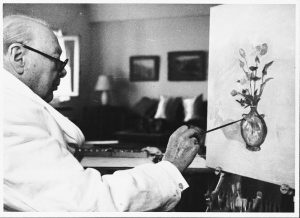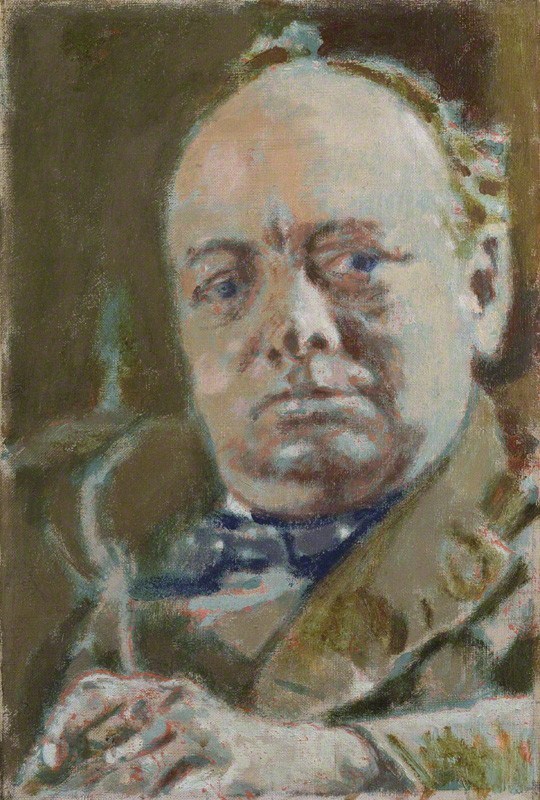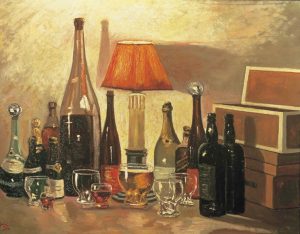
Artist
Influences

Winston Churchill by Walter Richard Sickert, oil on canvas, 1927. © National Portrait Gallery, London
March 24, 2017
Churchill sought and accepted constructive criticism – in the art of painting, at least – and enjoyed experimenting with new media and techniques. Sir John Lavery and his wife Hazel were not the only influences on Churchill’s painting style. During the 1920s, when he was Chancellor of the Exchequer, Churchill took advice on painting from Walter Sickert, who passed on his enthusiasm for Degas, Corot and Constable. As well as scrutinising the works of these painters, Churchill also carefully studied and absorbed the work of others; J. M. W. Turner, Camille Pissarro (whom Clementine had met in Paris), Paul Maze (the Anglo-French painter whom the Churchills called ‘Cher Maître’), John Singer Sargent (who had painted his mother’s portrait), the sea painter Julius Olsson and William Nicholson. Many of them visited Chartwell, where he did much of his ‘daubing’, and Paul Maze accompanied him on many of his painting trips.
‘Have not Manet and Monet, Cézanne and Matisse, rendered to painting something of the same service which Keats and Shelley gave to poetry after the solemn and ceremonious literary perfections of the eighteenth century? They have brought back to the pictorial art a new draught of joie de vivre; and the beauty of their work is instinct with gaiety, and floats in sparkling air. I do not expect these masters would particularly appreciate my defence, but I must avow an increasing attraction to their work.’
Churchill, Painting as a Pastime
Subscribe
WANT MORE?
Get the Churchill Bulletin delivered to your inbox once a month.




